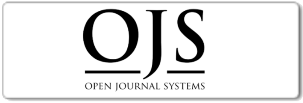DIGITAL DISRUPTION DAN DAMPAKNYA DALAM PENGEMBANGAN ILMU HUKUM
Abstract
Digital disruption adalah sesuatu yang niscaya dalam masyarakat, dan reaksi masyarakat menunjukkan bahwa ada resistensi sebagai akibat ketidaksiapan menghadapi perubahan. Reaksi sosial ini membutuhkan penyelesaian secara hukum. Penelitian ini merupakan gabungan dari penelitian normative dan empiris. Hukum memiliki keterbatasan kemampuan dalam menyelesaikan persoalan yang timbul akibat digital disruption. Penggunaann hukum untuk menyelesaikan persoalan dalam masyarakat memang sudah takdirnya, akan tetapi hukum yang berbasis pada teknologi yang saat ini berkembang (digital) tentu akan lebih sesuai sehingga dapat mendorong masyarakat dan teknologi itu sendiri ke arah kemajuan. Untuk itu diperlukan dialog antara ilmu hukum dan ilmu-ilmu lain agar produk hukum yang muncul benar-benar mencerminkan apa yang diinginkan oleh masyarakat dan teknologi itu sendiri.
References
Baiyere, A. 2014. Disrupted Disruptions: Lessonsfrom Potential Disruptive Innovations that barely
disrupted. Proceedings of The International Societyfor Professional Innovation Management (ISPIM).
Baiyere, Abayomi. and Philipp Hukal. 2020. Digital Disruption: A Conceptual Clarification. Proceeding 35th Hawaii International Conference on System Sciences. 5482-5491.
Berghaus, Sabine and Andrea Back. 2016. Stages in Digital Business Transformation: Results of an Empirical Maturity Study. Mediterranean Conference on Information Systems (MCIS) Proceedings. 22. http://aisel.aisnet.org/mcis2016/22. Accessed 28 June 2022
Bharadwaj, A., O.A. El Sawy, P.A. Pavlou, and N. Venkatraman. 2013. Digital Business Strategy: Towards a Next Generation of Insights. MIS Quarterly. 37(2). 471–482.
Brownsword, Roger. 2018. Law and Technology: Two Modes of Disruption, Three Legal MindSets, and the Big Picture of Regulatory Responsibilities. Indian Journal of Law and Technology. 14(1). 30-68.
Bughin, J., and N. Van Zeebroeck. 2017. The bestresponse to digital disruption. MIT Sloan Management Review. 58(4). 80–86.
Bonnet, D. Buvat J, Subrahmanyam K. 2015. When digital disruption strikes: how can incumbents respond? Cap Gemini Consulting. https://www.capgemini.com/consulting/resources/when-digitaldisruption-strikes. Accessed 26 June 2022.
Brock, David., Michael J. Powell, and C. R. Hinings. 1999. Restructuring the Professional Organization:Accounting, Healthcare, and Law. London ; New York: Routledge.
Christensen, C.M. 1997. The Innovator’s DilemmaWhen New Technologies Cause Great Firms to Fail. Harvard Business School Press.
Christensen, Clayton M. 2006. The ongoing process of building a theory of disruption. J Prod Innov Manag. 23(1). 39–55.
Christensen, C.M., and M. Raynor. 2007. Theinnovator’s solution: Creating and sustaining successful growth. Harvard Business Review Press.
Christensen, Clayton M., Michael Raynor, and Rory McDonald. 2015. What Is Disruptive Innovation?. Harvard Business Review. 93(12). 44–53. https://hbr.org/2015/12/what-is-disruptive-innovation. Accessed 28 June 2022
Elbanna, Amany and Mike Newman. 2016. Disrupt the Disruptor: Rethinking 'Disruption' in Digital Innovation. MCIS 2016 Proceedings. 58. http://aisel.aisnet.org/mcis2016/58. Accessed 28 June 2022
Farrall, F., Harding C, Hillard R et al. 2012. Digital disruption: short fuse, big bang? In: Building the lucky country–business imperatives for a prosperous Australia. Deloitte. https://www2.
deloitte.com/au/en/pages/building-lucky-country/articles/digitaldisruption-harnessing-the-bang.html. Accessed 26 June 2022
Faulconbridge, James, and Daniel Muzio. 2012. Professions in a Globalizing World: Towards a
Transnational Sociology of the Professions. International Sociology. 27(1). 136–52.
Fichman, R.G., B.L. Dos Santos, and Z. Zheng. 2014. Digital Innovation as a Fundamental and Powerful Concept in the Information Systems Curriculum. MIS Quarterly. 38(2). 329–353.
Gilbert, R.J. 2015. E-books: A tale of digital disruption. Journal of Economic Perspectives. 29(3). 165–184.
Gleick, James. 1987. Chaos: Making a New Science. Viking Books.
Govindarajan, V., and P.K. Kopalle. 2013. The usefulness of measuring disruptiveness of innovations ex-post in making ex-ante predictions. Journal of Product Innovation Management. 23(1). 12-18.
Gowder, Paul. 2018. Transformative Legal Technology and the Rule of Law. University of Toronto
Law Journal. 68(Supplement 1). 82–105.
Greenleaf, Graham. 2017. Review Essay: Technology and the Professions: Utopian and Dystopian
Futures. University of New South Wales Law Journal. 40(1). 302–321.
Hammerslev, Ole. 2008. The Development of the Danish Legal Profession. Scandinavian Studies in Law. 53. 283–302
Henfridsson, O., J. Nandhakumar, H. Scarbrough, and N. Panourgias. 2018. Recombination in the open-ended value landscape of digital innovation. Information and Organization. 28(2). 89–100.
Kallinikos, J., A. Aaltonen, and A. Marton. 2013. The Ambivalent Ontology of Digital Artifacts. MIS Quarterly. 37(2). 357–370.
Kaminski, Margot E. 2021. Technological 'Disruption' of the Law's Imagined Scene: Some Lessons from Lex Informatica. BERKELEY TECH. L.J. 36. 883-913. available at https://scholar.law.colorado.edu/facultyarticles/1570. Accessed 28 June 2022
Karimi, J., and Z. Walter. 2015. The role of dynamic capabilities in responding to digital disruption: A factor-based study of the newspaper industry. Journal of Management Information Systems. 32(1). 39–81
Keller, A., and S. Hüsig. 2009. Ex ante identificationof disruptive innovations in the software industry
applied to web applications: The case of Microsoft’svs. Google’s office applications. Technological
Forecasting and Social Change. 76(8).1044–1054
Kritzer, Herbert M. 1999. The Professions Are Dead, Long Live the Professions: Legal Practice in a
Postprofessional World. Law & Society Review. 33(3):713–59.
Kuhn, Thomas. 1970. The Structure of Scientific Revolutions, 2nd Ed. The University of Chicago Press.
Liu, Hin-Yan. The digital disruption of human rights foundation. In Mart Susi. 2009. Human Rights, Digital Society and the Law, A Research Companion. Routledge. London.
Liu, Hin-Yan., Matthijs M. Maas, John Danaher, Luisa Scarcella, Michaela Lexer, Léonard Van Rompaey. 2020. Artificial Intelligence and Legal Disruption: A New Model for Analysis. Law, Innovation and Technology. 12(2). 205–258. https://doi.org/10.1080/17579961.2020.1815402.
Lucas HC, Goh JM. 2009. Disruptive technology: how Kodak missed the digital photography revolution. J Strateg Inf Syst. 18(1):46–55
Lyytinen, K., and G.M. Rose. 2003. The Disruptive Nature of Information Technology Innovations: The Case of Internet Computing in System Development Organizations. MIS Quarterly. 27(4). 557–596
Lipnack, Jessica & Jeffrey Stamps. 1994. The Age of the Network, Organizing Principles for the 21st Century. John Wiley & Sons, Inc. New York.
Markides, C. 2006. Disruptive innovation: In need ofbetter theory. Journal of Product Innovation Management. 23(1). 19–25.
Morgan, Thomas D. 2010. The Vanishing American Lawyer. Oxford University Press. New York.
Moses, L. Bennett. 2007. Recurring Dilemmas: The Law’s Race to Keep up with Technological Change. University of Illinois Journal of Law, Techology and Policy. 21. 239-285.
Muzio, Daniel, and Stephen Ackroyd. 2005. On the Consequences of Defensive Professionalism:
Recent Changes in the Legal Labour Process. Journal of Law and Society. 32(4). 615–42.
Naisbitt, John., Nana Naisbitt dan Douglas Philips. 2001. High Tech, High Touch, Pencarian Maka di Tengah Perkembangan Pesat Teknologi. Mizan. Bandung.
Nambisan, S., K. Lyytinen, A. Majchrzak, and M. Song. 2017. Digital Innovation Management: Reinventing Innovation Management Research in a Digital World. MIS Quarterly. 41(1). 223–238.
Nambisan, S., K. Lyytinen, A. Majchrzak, and M. Song. 2018. Digital Innovation Management: Reinventing Innovation Management Research in a Digital World. MIS Quarterly. 41(1). 223–238.
Neal K. Katyal, 2014. Disruptive Technologies and the Law. The Georgetown Law Journal. 102. 1685-1689
Piliang, Yasraf Amir. 2001. Sebuah Dunia Yang Menakutkan, Mesin-mesin Kekerasan Dalam Jagat Raya Chaos. Mizan. Bandung.
Rahardjo, Satjipto. Mengajarkan Keteraturan Menemukan Ketidakteraturan (Teaching Order finding disorder). 30 Tahun perjalanan intelektual dari Bojong ke Pleburan Pidato mengakhiri masa Jabatan sebagai Guru Besar Tetap pada FH Undip Semarang, 15 Desember 2000;
Rahardjo, Satjipto. Rekonstruksi Pemikiran Hukum di Era Reformasi. Makalah pada Seminar Nasional Menggugat Pemikiran Hukum Positivistik di Era Reformasi, Semarang, 22 Juli 2000;
Raharjo, Agus. 2016. Anarki di Cyberspace, Filosofi dan Pengaturan Cyberspace. Genta Publishing. Yogyakarta.
Ramirez, Carlos. Promoting Transnational Professionalism: Forays of the “Big Firm”
Accounting Community into France. in M.-L. Djelic and S. Quack (eds). 2010. Transnational Communities. Cambridge University Press. Cambridge.
Rauch, M., Wenzel M, Wagner H-T. 2016. The digital disruption of strategic paths: an experimental study. In: International conference on information systems. Dublin
Riemer, K., and R.B. Johnston. 2019. Disruption as worldview change: A Kuhnian analysis of the digital music revolution. Journal of Information Technology. 34(4), 350-370.
Sardar, Ziauddin dan Iwona Abrams. 2001. Mengenal Chaos for Beginners. Mizan. Bandung.
Schmidt, E., and J. Cohen. 2005. The Digital Disruption-Connectivity and the Diffusion of Power. Foreign Affairs. 89(6). 75-85.
Seri Penerbitan Sains, Teknologi dan Masyarakat, Dari Cambridge Menuju Kopenhagen, Edisi I (2000);
Simpson, Brian. 2017. Special issue: disrupting technology, disruptive norms: the role of law in a digital world. Information & Communications Technology Law. 26(1). 1-5. DOI: 10.1080/13600834.2017.1269868
Skog, Daniel A., Henrik Wimelius dan Johan Sandberg. 2018. Digital Disrtuption. Bus Inf Syst Eng. 60(5). 431-437.
Slouka, Mark. 1999. Ruang yang Hilang, Pandangan Humanis tentang Budaya Cyberspace yang Merisaukan. Mizan. Bandung.
Susskind, Richard E., and Daniel Susskind. 2017. The Future of the Professions: How Technology Will Transform the Work of Human Experts. Oxford University Press. Oxford.
Tan, TCF., Tan B, Choi BC et al. 2015. Collaborative consumption on mobile applications: a study of multi-sided digital platform GoCatch. In: International conference on mobile business. Fort Worth
Tilson, D., K. Lyytinen, and C. Sørensen. 2010. Research Commentary —Digital Infrastructures: The Missing IS Research Agenda. Information Systems Research. 21(4). 748–759.
Twigg-Flesner, Christian. 2016. Disruptive Technology - Disrupted Law? How the Digital Revolution Affects (Contract) Law. in A. De Franceschi. 2016. European Contract Law and the Digital Single Market. Intersentia. Available at SSRN: https://ssrn.com/abstract=3039952. Akses pada 30 Agustus 2023.
Utesheva, A., J.R. Simpson, and D. CecezKecmanovic. 2016. Identity metamorphoses in digital disruption: a relational theory of identity. European Journal of Information Systems. 25(4). 344–363
Webb, Julian. 2004. Turf Wars and Market Control: Competition and Complexity in the Market for
Legal Services. International Journal of the Legal Profession. 11(1–2). 81–102
Webley, Lisa, John Flood, Julian Webb, Francesca Bartlett, Kate Galloway, and Kieran Tranter. 2019. ‘The Profession(s)’ Engagements with LawTech: Narratives and Archetypes of Future Law.
Law, Technology and Humans. 1(1). 6–26.
Weill. P., dan Woerner SL. 2015. Thriving in an increasingly digital ecosystem. MIT Sloan Manag Rev. 56(4). 27–34
Wenzel, Matthias., David Wagner, Heinz-Theo Wagner, and Jochen Koch. 2015. Digitization and Path Disruption: An Examination in the Funeral Industry. ECIS 2015 Completed Research Papers. Paper 199. ISBN 978-3-00-050284-2 http://aisel.aisnet.org/ecis2015_cr/199. Accessed 28 June 2022
Westerman G, Bonnet D. 2015. Revamping your business through digital transformation. MIT Sloan Manag Rev. 56(3). 10–13.
Yoo, Y., O. Henfridsson, and K. Lyytinen. 2010. The New Organizing Logic of Digital Innovation: An Agenda for Information Systems Research. Information Systems Research. 21(4). 724–735.
Yoo, Y., R.J. Boland, K. Lyytinen, and A. Majchrzak. 2012. Organizing for Innovation in the Digitized World. Organization Science. 23(5). 1398–1408.

This work is licensed under a Creative Commons Attribution 4.0 International License.







